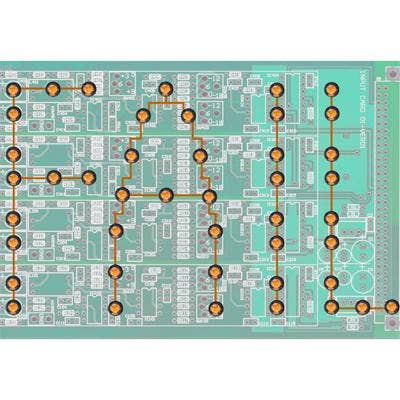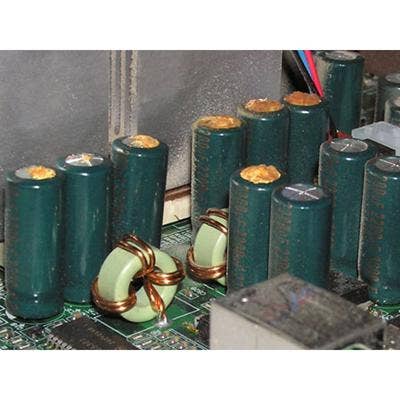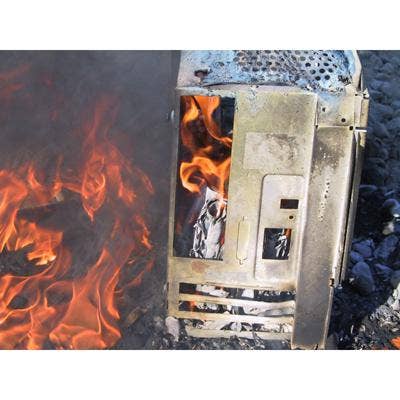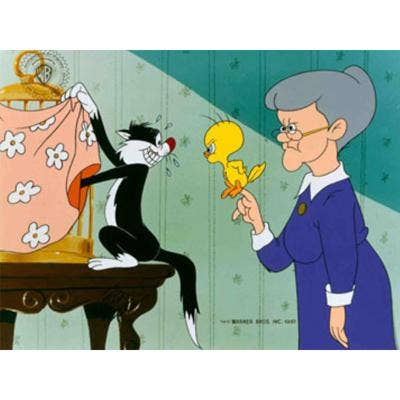Dell's 9 Steps To Epic Fail In The Capacitor Disaster

Profile Of A Meltdown
Ahh, unsealed court documents -- the gift that keeps on giving. Whether it’s the internal Microsoft e-mails made public in the Vista Capable case or Intel’s alleged strong-arming of computer manufacturers revealed in New York anti-trust proceedings, we’re often given an inside glimpse of high-tech giants that they desperately don’t want us to see.
Which brings us to Dell. Namely, the recently unsealed court filings that are part of Internet service provider Advanced Internet Technologies’ (AIT) lawsuit that alleges the computer maker knowingly sold AIT a bunch of Dell OptiPlex computers in the mid-2000s that had wonky motherboard capacitors with a staggering 97 percent failure rate. That case goes to trial Oct. 18 and if AIT wins, it could be awarded as much as $120 million in damages from Dell.
CRN has seen AIT’s brief against Dell and what follows is a run-down of all the things Dell allegedly did very, very wrong in the OptiPlex capacitor debacle.

Penny Wise, Pound Foolish
What led to Dell’s capacitor woes? The roots of the debacle, it must be said, lies in the computer maker’s business model -- providing customers with the lowest-priced PCs on the market. Even though cutting corners where you can to be the low-price leader isn’t in and of itself a terrible thing.
Still, by going the cheap route with PC components, Dell was increasing the chances that some would fail -- and in the case of capacitors made by Japanese manufacturer Nichicon on OptiPlex motherboards, spectacularly so. How Dell would handle the catastrophe was crucial.

Surprise, Surprise
What happens when you use the cheapest components you can find? Often enough, you wind up making a bad product, like Dell’s OptiPlex computers. Still, just making a cheap, glitchy PC doesn’t count as a crime -- and after all, even expensively made hardware can have bugs and break down.
But what it does mean is that you have to take your lumps along with your boffo volume sales. You have to be up front with customers when it happens and deal with the blowback as it comes. Like the way, say, Advanced Micro Devices owned up to the glitch on its Barcelona chips a few years ago.

Stop Digging!
Amazingly, even after Dell identified the defective capacitor problem in its OptiPlex PCs, the company decided to keep making a shoddy computer. According to the AIT brief, Dell knew about a fatal problem with its OptiPlex motherboards as early as January 2003 and knew specifically about the Nichicon capacitor failures by January 2004. Yet Dell sold flawed OptiPlexes to AIT as late as 2005.
And yet even the fact that Dell wound up shipping nearly 12 million dodgy OptiPlexes -- no, really -- could have been handled better. Take Microsoft’s Xbox 360 game console, with its famous ’red ring of death’ signifying the failure of its similarly wonky motherboard. Not the best scenario for Microsoft, but at least the software giant will ship you a new unit without any fuss if (more like when) your Xbox 360 craps out.

Put Your Money Where Your Mouth Is
To make matters worse, Dell apparently ran into some serious supply chain problems when the inevitable warranty claims came in concerning broken OptiPlex computers. And there were a lot them, given that by Dell’s own estimates, OptiPlex boards of the era had a 97 percent failure rate during warranty.
This led to a bunch of fishy practices by Dell, AIT alleged in its brief. These included replacing busted boards with more defective parts, servicing certain leasing customers with warranty claims ahead of others at the behest of Dell Financial Services, wrangling consequential damage waivers from customers, and worst of all, providing warranties in the first place without making sure it had the cash and parts to honor them.

Good Cop, Bad Cap
One Dell memo cited in the AIT brief stated that the vendor was ’the first company to identify the problem’ with the oozing, bulging, bursting Nichicon capacitors. But if Dell really was the first computer maker to diagnose the problem, it wasn’t the only one to get leaked on with nasty orange capacitor juice. Apple, Hewlett-Packard and other companies also reportedly had ’bad cap’ motherboard issues around the same time.
But those companies generally met their warranty obligations to the satisfaction of their customers. That Dell apparently didn’t makes the Round Rock, Tex.-based company look not just sleazy but also kind of dumb. If everybody’s having the same problem, there’s no shame in admitting that it’s also happening to you. There’s safety in numbers, after all.

We See NOTHING! We Know NOTHING!
Rather than cop to its cap problem, Dell appears to have instructed its customer reps to do everything in their power to avoid attributing OptiPlex failures to Nichicon capacitors. The string of memos and e-mails cited in the AIT brief to show that this happened is frankly astonishing.
Among other things, Dell instructed sales personnel not to bring the capacitor issue to customers’ attention and to ’emphasize uncertainty’ when customers brought the topic up. And when one poor rep made an ’inadvertent disclosure’ about the real cause of OptiPlex failures, management fumed.

Damn You, Math!
Dell’s strategy to avoid ’fessing up about the capacitor problem and having to pay out on warranties it didn’t have the cash or parts to honor? Blame the victim! For example, Dell apparently blamed AIT for using its OptiPlexes as servers rather than admit what it really knew -- that those boxes were compromised by bad parts.
But the most comical case of victim-blaming concerned OptiPlex failures at the University of Texas, which Dell attributed to ’complex mathematical calculations’ being run on the computers. That’s probably not the most airtight explanation from a maker of complex mathematical calculation machines.

Web Of Deceit
According to the AIT brief, Dell began sending experts and technicians around to individual customer sites where OptiPlexes were falling like flies, for the purpose of ’discovering’ what customers like Wal-Mart and Merrill Lynch were ’doing wrong’ to cause the computers to fail. Perplexing, because as the AIT brief wryly notes, ’OptiPlexes seemingly failed everywhere they were used,’ regardless of the use case.
Who knows what it cost Dell to fly its agents around diagnosing what AIT alleges were fictitious customer errors? What if, instead of throwing good money after bad to keep up the pretense that its customers were at fault, Dell had done like HP and admitted to the capacitor problem right away? The company wound up taking a $300 million charge in 2005 over the issue and faces a potential payout of $120 million to AIT, so you have to wonder if this was even a good cost-of-doing-business decision, let alone an ethical one.

Probably Not A Good Idea
If there was one set of customers Dell had every interest in keeping happy and fully operational IT-wise, you’d think it might have been the vendor’s own lawyers. Yet amazingly, Dell apparently gave Alston and Bird, the law firm representing it in the AIT suit, the same treatment it gave everybody else when Alston and Bird’s OptiPlex PCs started failing!
Hey, it’s not like we don’t all secretly like the idea of somebody screwing over a bunch of lawyers. But when you do it to the outfit that holds your own legal fate in its hands, it’s sort of like a trapeze artist having an affair with the wife of the guy who’s supposed to catch him.